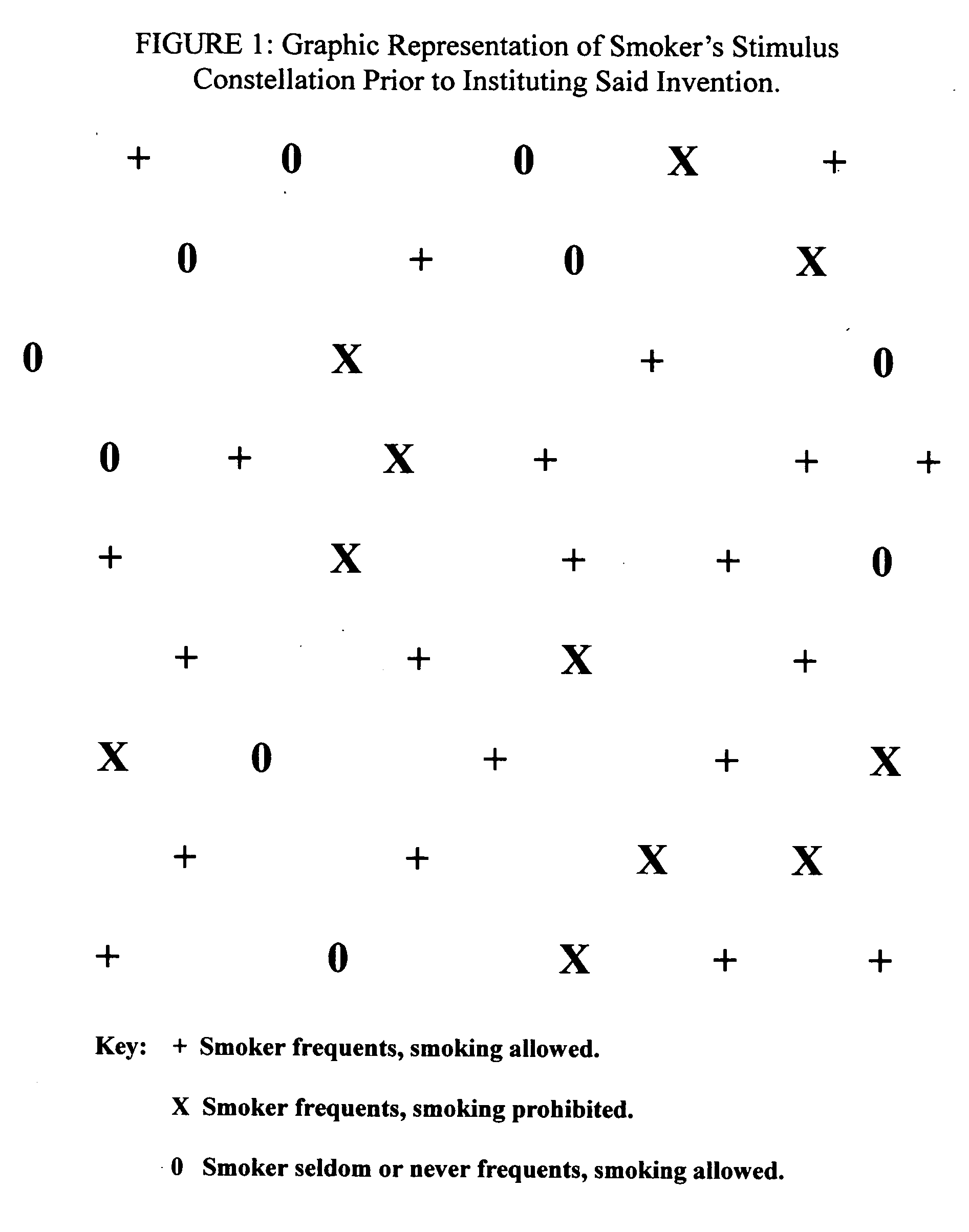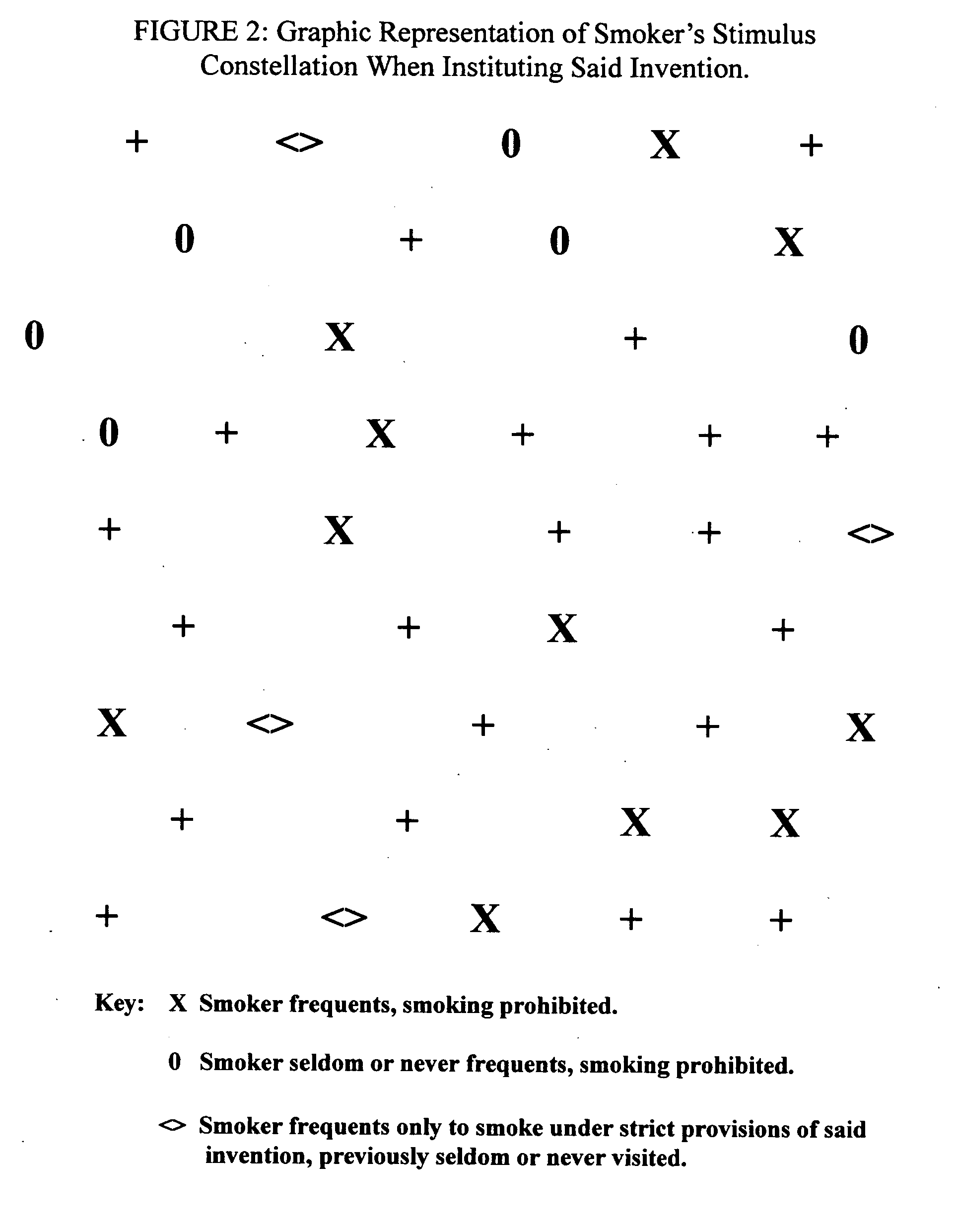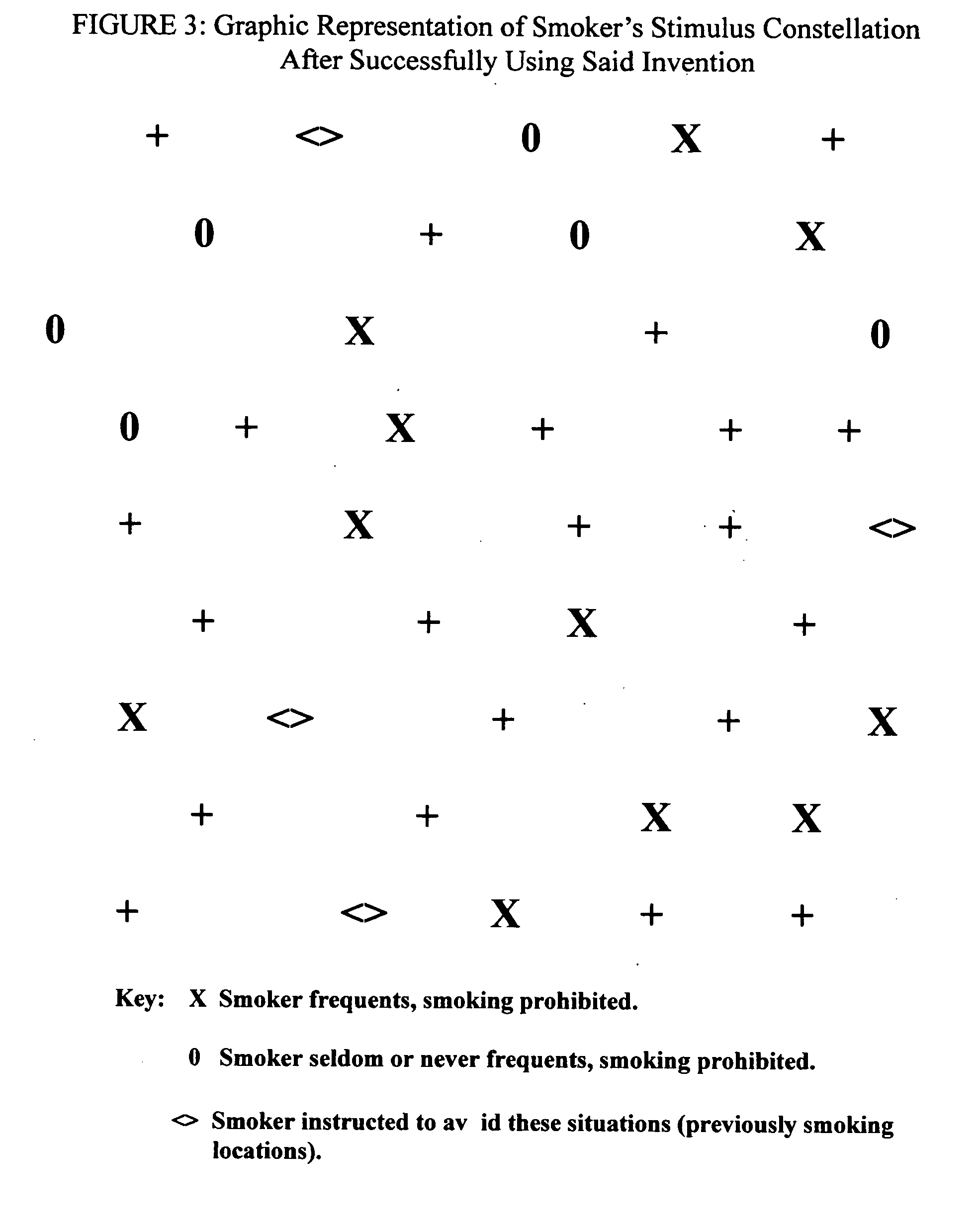Habit based self-help method for smoking cessation
a self-help and habit-based technology, applied in the field of habit-based self-help methods for smoking cessation, can solve the problems of reducing productivity, affecting the health of smokers, and affecting the health of smokers, and achieve the effect of rapid smoking cessation and rapid cessation
- Summary
- Abstract
- Description
- Claims
- Application Information
AI Technical Summary
Benefits of technology
Problems solved by technology
Method used
Image
Examples
Embodiment Construction
[0043] FIG. 1 represents the stimulus world of the smoker prior to attempting to quit, and before instituting said invention. All +s represent places smoker will frequent on a day to day basis in which smoking is permitted. These places include smoker's home, car, workplace, homes of smoking friends and relatives, taverns and smoking sections of restaurants, etc. The response and habit of smoking is conditioned to all of these situations, and the response of smoking frequently occurs. Xs refer to situations and places frequented by smoker where smoking is prohibited. These include government building, stores, hospitals, professional offices, etc. Smoking is not conditioned to these settings as the response does not occur in the presence of these cues. 0s represent situations in which smoking is permitted, but where smoker rarely ventures. Such places would include sitting on the side of a highway, under a tree in the woods, or behind a storage shed. Smoking is not conditioned to the...
PUM
 Login to View More
Login to View More Abstract
Description
Claims
Application Information
 Login to View More
Login to View More - R&D
- Intellectual Property
- Life Sciences
- Materials
- Tech Scout
- Unparalleled Data Quality
- Higher Quality Content
- 60% Fewer Hallucinations
Browse by: Latest US Patents, China's latest patents, Technical Efficacy Thesaurus, Application Domain, Technology Topic, Popular Technical Reports.
© 2025 PatSnap. All rights reserved.Legal|Privacy policy|Modern Slavery Act Transparency Statement|Sitemap|About US| Contact US: help@patsnap.com



